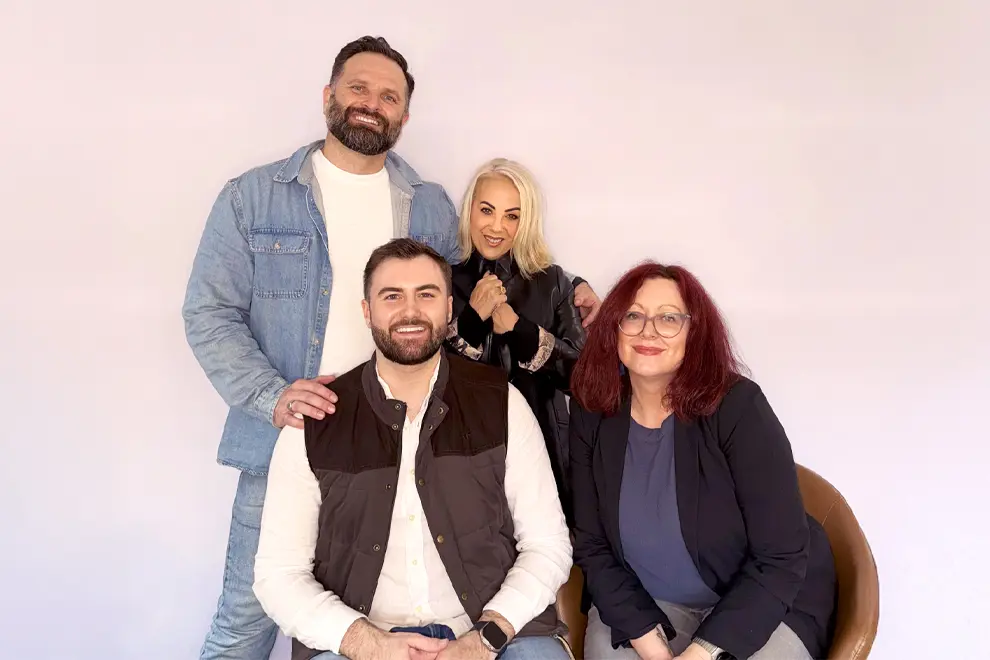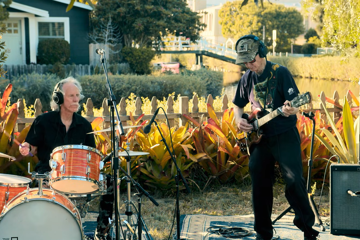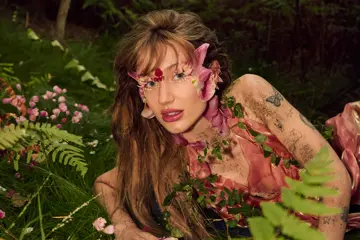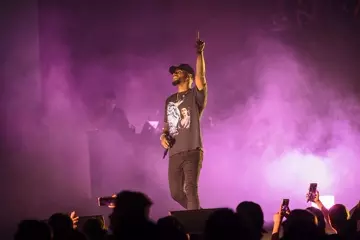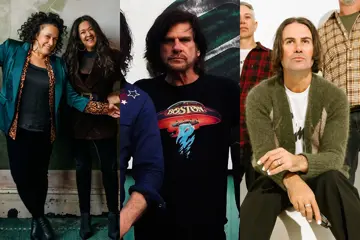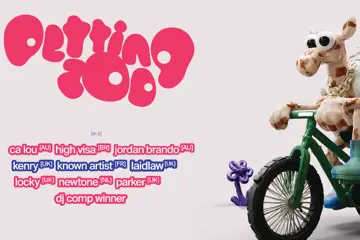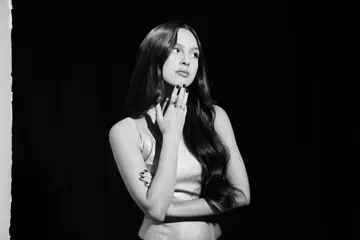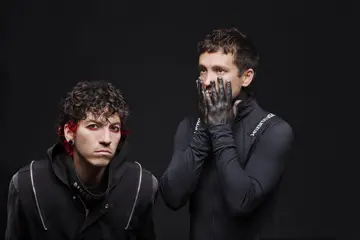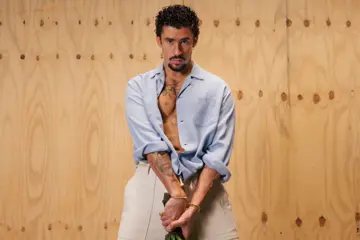When it comes to artists being able to achieve their creative goals, the ability to create without financial stress is a massive alleviation of stress. That's exactly some of the thinking behind the launch of the nascent Volume Foundation.
For those unaware, Volume Foundation is the newly-launched philanthropic arm of new premium spirits-brand Volume Australia.
A not-for-profit organisation, Volume Foundation is dedicated to providing flexible export funding, mentorship, live performance opportunities, and strategic support to help creatives and their teams develop sustainable, globally competitive careers.
Running the Foundation are its three co-founders, Managing Director Milly Petriella OAM (former Director of Member Relations at APRA AMCOS), CEO Albert Kruger (former CEO of Sydney Gay and Lesbian Mardi Gras), and COO Jesse Forge, with the latter two also serving as the CEO and COO of Volume Australia, respectively.
The team is rounded out by a Board featuring Rachel Kelly (General Manager, Publishing & Sync at UNIFIED Music Group) as Chair, and including the likes of producer Tushar Apte, artist Nat Dunn, Petrol Publishing's Stevey Arena, and Lani Richmond, who also serves as the manager of Aloe Blacc.
Don't miss a beat with our FREE daily newsletter
Together, this vast collective of talent have come together to give Australian artists the chance to grow their careers by way of a three-month global residency in which they receive a living wage, while their managers also receive a cash injection to help achieve the creative goals that sit atop their list.
As Kruger explains, Volume Foundation is – at its heart – an organisation that seeks to support artists that are successful in their individual careers, but battling to break into the mainstream.
"We want to work with these artists to refine their art and really focus on giving them the tools to have a robust business that they can break into mainstream and essentially create more Kylie Minogues," he explains.
Effectively, it's giving these artists the tools they need to survive and giving them a leg up so they can break into the areas they need to in order to further their careers.
"Paid performances, mentorship, running their businesses, marketing, media, and PR platforms," Kruger continues. "Getting them in front of their audiences with the right tools for them to be able to really deliver what is necessary to make it big time."
As Petriella, the seed for Volume Foundation first began to germinate when she and Kruger worked together on APRA AMCOS' Express Yourself – Queer Discovery program. The result was a small program which was able to provide artists – without any funding – performance opportunities and space within the public eye.
"From that, we saw that there is a definite need for pathways, especially for mid-career artists who need to go overseas," she explains. "At the moment, your career can be of a size in Australia, but to really hit that global stage, you need to spend some time outside of Australia.
"So we thought, 'Let's do this and let's put our money where our mouth is.' Albert and his partner Jesse had started a distillery; a vodka and um, gin company, so they're putting their money where their mouth is by giving a percentage of the revenues to the Foundation, and that income is what we want to put directly into the hands of artists.
"For me, it's an all-rounded support for Australian artists to further their career, both here and overseas," Petriella continues. "But to also create a bit of a collective, a family here that we can support and provide opportunities at home."
While the Express Yourself – Queer Discovery program first provided an experience of working together, Kruger's three-and-a-half years working with the Sydney Gay and Lesbian Mardi Gras resulted in him also working with the World Pride festival. It was around this time that the Australian festival scene found itself in crisis mode, especially with widespread cancellations at the hands of myriad external forces.
"But what nobody really stopped to think about was what happened to the artist that depended on the funding for that paid opportunity when they were supposed to perform," Kruger explains. "So the reality is, from a commercial entity point of view, Volume Australia came first, and really what it was about is us as an organisation having a real purpose."
Kruger points out that while other beverage organisations will tell consumers to drink them because they're enjoyable, Volume is saying they've not only got "an amazing product," but that they're also "pouring with purpose."
"It's about uplifting that opportunity where the commercial entity has activations on premise with bars and clubs and restaurants and hotels," he begins. "And that is the paid opportunities where we pay artists to perform and give them the platform profile, marketing, PR, mentorship, etc., so that they can have the best opportunity for success.
"The idea was that we would get Volume Australia up, start selling bottles, and then begin putting the 3% of revenue into the Foundation."
As he explains, the Volume Foundation is a standalone organisation which exists in a one way street of communication, whereby Volume Australia purely places money into the Foundation, which is a not-for-profit, limited by guarantee, and has its own Board members, its own governance, and policy structures.
"We're just simply one of the sponsors, if you will, and supporters of what the Foundation is to do," Kruger notes. "So I'm under no illusion that the Volume Foundation may look entirely different in two years' time.
"It may have a number of other corporate sponsors working with it, and there may be other programs that come out of it where we see a need in this particular space, which is – in our mind – severely under-serviced.
"Some of these artists have quite a big following, but they just hit that glass ceiling where they can't break into the mainstream," he explains. "And it's our mission to break that with them."
The approach of the private sector working alongside the government aligns with the goals of the Revive National Cultural Policy, which calls for both sectors to collaborate together.
"If we want a thriving creative sector, we need government and private enterprise working side by side," Kruger said in a statement upon Volume Foundation's announcement. "This model shows how business can contribute to lasting cultural impact – by backing artists for the long term, not just the next gig."
"Revive and all the funding came through Creative Australia and Create NSW, and we've seen a bit of a shift in the support that artists are getting, even though it's still nowhere near enough," Petriella says. "I don't want to sound greedy, but it is nowhere near enough, and it is difficult to access that funding sometimes.
"Having worked at APRA, there were at least three phone calls from an artist saying, 'I'm going overseas, I don't know what I'm doing, I don't know how to connect, I can't afford it, how do I access money?' And the managers were making those phone calls as well.
"There's always been that idea that you've got to go overseas to make it, but I think it's going to change that," she adds. "Yes, you've got to go overseas to make it, but you're also going to be proudly coming home and being able to sustain your career both here and overseas. And I think that's what we are striving for, to be honest."
So how exactly does the Volume Foundation's first program – the Volume Per Diem – actually work?
Put simply, it's an international export package that sees $30,000 paid toward an artist chosen through an application process. That artist will embark upon a 12-week international residency that is tailored to their creative goals.
The 12 weeks see the artist receiving a $2,000 per week living wage, while the artist's manager also receives $6,000 to support key activities.
Along the way, they'll also receive access to mentorship, industry introductions, and showcase opportunities.
While there are no stipulations in regard to where the artist can be based, it will be reliant on the level of opportunities available to them. However, this isn't simply a grant for upcoming artists to head overseas for a three-month holiday, it's catered toward artists whose careers have been making impressive inroads.
"We're really going to set in place that the artist needs to be at a certain level and has already done some preliminary groundwork in that territory," Petriella explains. "We don't want this to be the first trip overseas because we all know it takes three to six trips before you really make any inroads.
"So we'll have a committee, we'll go through the eligibility; what they have done in that territory. We really thought it was important to provide the manager with some support as well, to go in for a portion of that time because the artist needs the support, but the manager needs to be in there also, setting up those meetings, setting up those co-writing sessions, appointments with publishers and labels, etc.
"It's supporting both sides and you know, I've got that directly from managers who are saying, 'We need to be supported as well,'" she adds. "Going out and speaking to a lot of managers, they've kind of nodded that the per diems model is the correct model because it's supporting both. There are obviously artists that will be eligible for this, that don't have a manager and will be going over there to shop for a manager."
Most importantly, there is a level of flexibility in regard to how the money is being used. It will begin early to facilitate the payment of flights, for accommodation, and other incidentals, and the three-month limit is in place to adhere to US immigration laws for those who may be visiting the country.
Additionally, there are no mandated outputs in regard to how the money is being used, ultimately meaning that the success of the Foundation's investment is largely shown by the outlay of cash to the artist and the financial support they are receiving.
"It's to be expected, especially when we're putting money into an artist, it's not a paid holiday for them to go and lay on the beach in LA, it's more a fact that we want to try and get a number of paid gigs out of it and we want to see how many meetings they actually had with other managers, etc.," Petriella notes.
"Each territory is going to be very different, and each creator is gonna be very different if we're supporting a songwriter that's going to Sweden and they're able to be in a room every day for those three months with all the Swedish pop writers. That's going to be a completely different outcome from an artist who's going to London and wants to perform or go to The Great Escape, for example."
While the first round of applications for the Volume Foundation's Volume Per Diem will be opening within the coming months, the end result will hopefully see four to six artists per year receiving this cash injection with which to further their careers.
As Petriella notes though, the Volume Foundation's current approach isn't static, and hopes to provide as much financial support to artists as possible.
"When the alcohol starts flowing and the 3% revenue comes in, and when we do some more shopping with some major donors, sponsors and support," she concludes. "When we get the money in, the money's gonna be going out to the artists."
Stay tuned for further updates from the Volume Foundation via their website.
This piece of content has been assisted by the Australian Government through Music Australia and Creative Australia, its arts funding and advisory body


